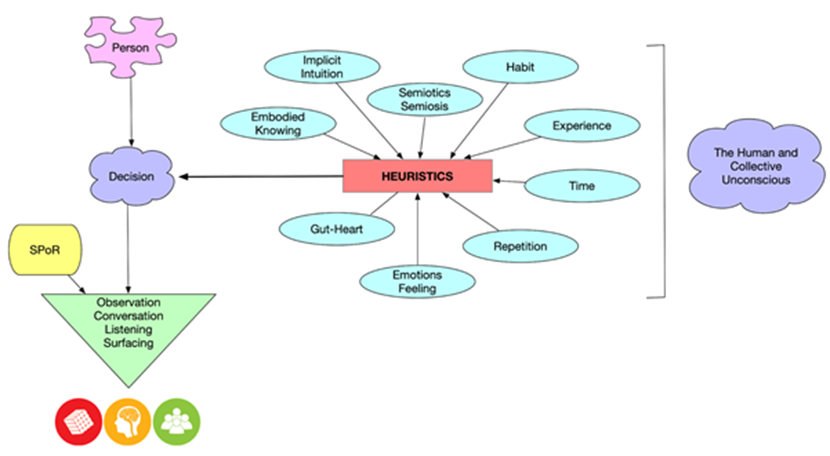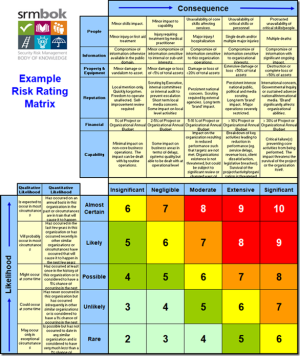Originally posted on September 29, 2022 @ 11:28 AM
The recognition of heuristics as the foundation for all human decision making is critical to skill development and implementation of SPoR (https://safetyrisk.net/spor-and-disposing-of-bad-myths/) in the workplace.
One of the silly myths of behaviourism in safety is the complete ignorance of heuristics. Behind all behaviours is a heuristic, it’s just that safety doesn’t know it.
Heuristics are mental short cuts that help make fallible humans fast and efficient.
You can read more on heuristics here:
- https://www.researchgate.net/publication/227466812_Simple_Heuristics_That_Make_Us_Smart
- http://library.mpib-berlin.mpg.de/ft/gg/GG_Heuristic_2011.pdf
The grand delusion of BBS safety is the silly notion that an observed behaviour has meaning in itself. More safety mythology.
All heuristics are developed gradually over time through experience. There is no fast and slow as Kahneman asserts. The projection that human decision making is binary is nonsense.
All behaviours hide an unseen and unconscious decision and an observed behaviour in itself tells you nothing about motivation, psychology of goals or social influence. Such is the mythology of BBS.
I have written on heuristics here:
- https://safetyrisk.net/perception-heuristics-cognitive-bias-and-the-psychology-of-safety/
- https://safetyrisk.net/investigations-and-heuristics/
- https://safetyrisk.net/emotions-bias-and-heuristics-in-risk/
- https://safetyrisk.net/the-purpose-of-routines-habits-and-heuristics-checking-your-gut/
One of the fascinations of much mythology in safety about habit is complete ignorance of heuristics and how they work. There can be no understanding of habit without an understanding of heuristics.
In order to help understand the nature of heuristics and what SPoR does about it, I have developed the following model: Figure 1. Tackling Heuristics in Risk.
Figure 1. Tackling Heuristics in Risk.
What this model shows is how heuristics are developed, what influences their development and how SPoR tackles the challenge of understanding unconscious decision making in risk. The tools and methods associated with this are positive, practical and doable.
Everything SPOR offers is positive, practical and doable as alternative to the myths and dehumanising of zero/safety and its methods.
One can only find out about determining motivations, habits, heuristics and social influences with a methodology that is visual, verbal and social. Such is the nature of the iCue methodology and method. I have written before on this practical and positive methodology:
- https://safetyrisk.net/icue-education-pack-to-enable-learning-in-the-spor-approach-to-risk/
- https://safetyrisk.net/conversational-icue/
- https://safetyrisk.net/icue-diagnostic-what-is-your-risk-icue/
- https://safetyrisk.net/concept-mapping-risk-icue/
- https://safetyrisk.net/what-is-your-risk-icue/
Learning how to observe and listen using iCue methods demands the privileging of verbal, visual and semiotic thinking, the opposite of most tools common to the safety market. Yet, the methods iCue provides are actually valued by the courts and legal systems, such is the nature of testimony.
Learning how to listen, observe and understand heuristics using the iCue method takes 6-12 months of skill development and learning to code listening. The tools provided in iCue are practical, doable, easy to understand but involve letting go of some safety myths and the nonsense of zero.
If you want to learn how to tackle the challenge of heuristics, it’s as easy as an email and a will to learn. A tough ask apparently for an industry seduced by engineering and quanta (https://safetyrisk.net/you-can-put-safety-into-engineering-but-you-cant-get-engineering-out-of-safety/).
Many organisations that are using iCue testify to its great success and how it works (https://www.humandymensions.com/product/it-works-a-new-approach-to-risk-and-safety/).




Do you have any thoughts? Please share them below